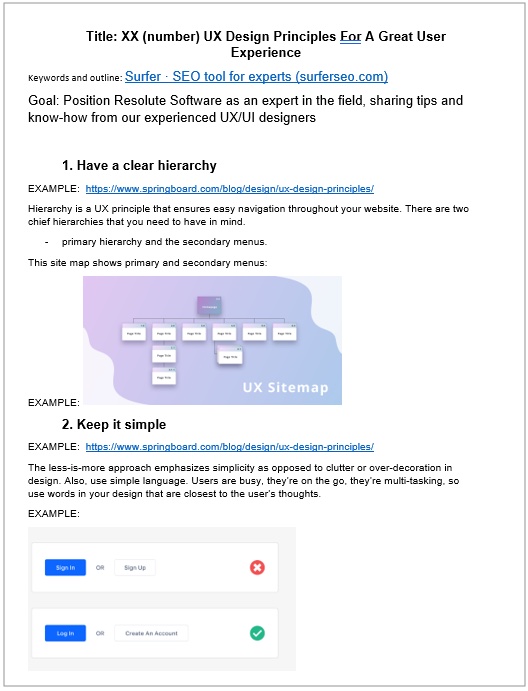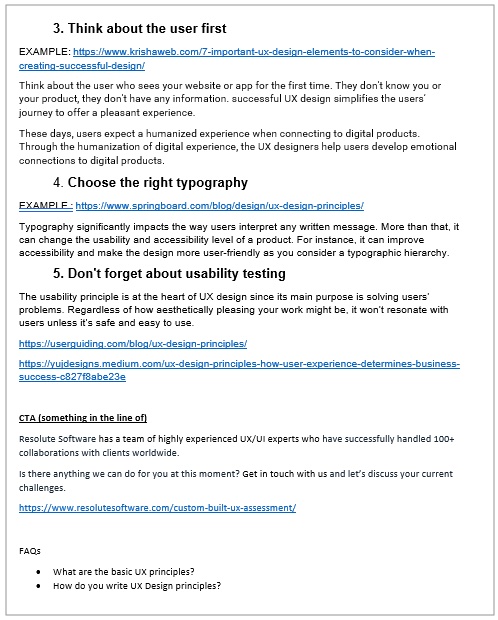Content Marketing
Why Your Content Marketing Needs Standard Operating Procedures
Bad systems break. We’ve all seen it in action. A writer submits a piece of content and it completely misses the mark, requiring a full overhaul. Or you discover grammatical errors while uploading a piece that’s been approved for launch. You’ve seen it when a crucial deliverable was missed during an important product release campaign.
These annoying snags are symptoms of a wider operational issue: requirements, information, and processes aren’t communicated clearly.
The good news is that you already have what you need to solve the problem. The solution resides in the minds of your marketing team. The problem? You need better documentation so that anyone can access the appropriate process for repeatable tasks at any time. Your team’s expertise and processes form a standard operating procedure (SOP) that can be widely used across multiple campaigns and projects.
These written guides are the key to executing every task correctly, every time, for everyone involved in your content marketing operations.
Why content marketing SOPs are necessary
Content marketing standard operating procedures (SOPs) are detailed process documents that outline the steps needed to complete a piece of content, campaign, or project.
SOPs help your team collaborate efficiently and effectively, and they’re also helpful when onboarding freelancers or bringing on new team members. This documentation should be stored on a shared company drive, intranet, or project management tool that all relevant team members can access.
A few examples of content marketing activities that might benefit from an SOP include:
- Content creation (blog, video, podcast, etc.)
- Webinar creation and execution
- SEO research
- Report building
How to create an SOP
You likely already know your processes well enough to create an initial draft. Use that as a baseline to talk with team members and freelancers about their biggest pain points. As you go through this exercise, these conversations should help you improve existing processes, so your future projects run even smoother.
1. Determine which activities need an SOP first
Creating SOPs for every single activity in your department may be useful, but it’s also incredibly daunting and time-consuming. So, start with frequently recurring or chaotic tasks.
Ideally, you want an SOP for every activity your team executes (like blog articles, newsletters, analytics, e-books, website updates, back-linking, referrals, etc.). “Anything we do on a regular basis, we have a document that tells us how to do it,” said Esther Lizmi, Cashfloat‘s Head of Business Process Optimization. “This includes things like onboarding, training, social media and PR, support for tools, creating blog content, landing pages, SEO tasks, and more.”
Each SOP should include:
- Goals
- Workflows
- Content briefs for creators
- Audience personas
- Project timelines
- Instructions on how to access and use necessary tools
The best SOPs are so granular that someone who’s never worked with you before could walk in off the street, follow your guidelines, and produce the results you’re looking for.
If you have routine projects, repeat instructions, or send back work with the same feedback often, you need an SOP. They’re often most useful for tasks that are done by freelancers or in roles where there’s high turnover.
2. Create an SOP template
Each SOP should include a standard outline but can vary based on your team’s needs. A good SOP includes:
- Prerequisites. Everything needed to implement this procedure (i.e., knowledge, training, software, equipment, related SOPs, etc.).
- Purpose. Describe the purpose and what the SOP intends to accomplish. What’s the goal? How is this meaningful in the grand scheme of things, and what does this contribute in the long-term?
- Policy. Describe the rules associated with performing the procedure and the parameters within which the person performing the task must complete it (i.e., must be done on Mondays, the final product goes live at [date], etc.).
- Process. Define the general, big-picture steps needed to accomplish the task. For example, if this is for a blog:
- Write blog
- Obtain approval
- Upload blog to website
- Feature blog on social and email to [specific] audience
- Procedure. Identify activities or events for each step outlined in the process above. Use screenshots or explainer videos, if needed, and provide details.
Be sure to include information on who created it and when to help track when the SOP may need updating.
3. Build your SOPs
SOPs can take a variety of forms, from an outline to a flowchart, depending on the complexity of the procedure.
“If you do this right, your SOPs will be valuable for years to come,” Lizmi said. “We recently had to use an old SOP to help us handle some redirects, which we hadn’t done in a while. It worked seamlessly without any updates, years after we had made it.”
If you’re not sure where to start, imagine you have a new employee with whom you’ll never be able to speak directly. Your SOP should cover everything they need to know.
Be sure to test your SOP before releasing it into the wild. Give it to someone who knows nothing about the process you’re documenting to test. While you might think you’ve captured everything possible, it’s common to miss small but critical components. Your SOPs should be treated as living, breathing documents and reviewed annually to reflect new information or changed processes.
Example: Resolute Software
As part of her content marketing SOPs, Evelin Georgieva, Marketing Expert for Resolute Software, creates detailed content briefs for freelancers who work on articles to meet SEO goals.
“It’s my job to build and execute our SEO strategy,” Georgieva said. “I work a lot with freelancers and create briefs for our articles. They get very detailed—the more details, the better the result.”
Georgieva’s content brief for the article “5 Core UX Design Principles For A Great User Experience” includes standard information provided in every brief. In addition, she creates context for her freelance team by providing the keywords and goals for the piece, as well as a brief outline that includes bullet points for each section.

Throughout the brief, Georgieva includes links to example content for her writers to emulate, as well as questions to answer in each article’s FAQ section.

Finally, she includes a list of useful links from credible sources for writers to use when looking for supporting statistics or conducting research. Another helpful addition would be to include three or four top-ranking articles from competitors to help the writer understand what they’re up against.
Worth the Effort
Does creating an SOP like this actually result in less work for your marketing team? For Georgieva, the answer is a resounding yes.
“I’ve worked with a lot of writers throughout my career, and in many cases, the briefs were a lot briefer,” Georgieva said. “But this upfront work has drastically reduced the amount of input I have to give after an article is complete and lightens the workload for the rest of the team.”
SOPs are an investment in your company’s future. Yes, they take time to create, but they’re designed to maintain project efficiency, keep clear communication with your teams, and reduce the endless cycle of fixing the same mistakes over and over again.
Image by CreativaImagesGet better at your job right now.
Read our monthly newsletter to master content marketing. It’s made for marketers, creators, and everyone in between.




